Public Works and Environmental Services Alert:


Standards are:
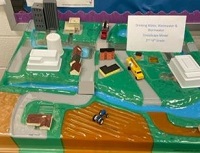
Standards are:
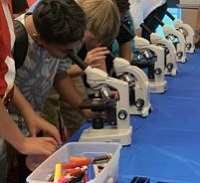 The Micros are Everywhere activity introduces students to the microscope and the importance of microorganisms in our environment. Students will learn how microorganisms help clean wastewater. Microscopes CAN be provided; however, they are limited in number and students will need to share. Slides and worksheets will be provided. Standards are:
The Micros are Everywhere activity introduces students to the microscope and the importance of microorganisms in our environment. Students will learn how microorganisms help clean wastewater. Microscopes CAN be provided; however, they are limited in number and students will need to share. Slides and worksheets will be provided. Standards are:
Science Standards aligned:
Math Standards aligned:
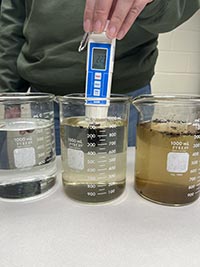 Dissolved Oxygen is oxygen that is dissolved in water. Fish and other marine life need it to breathe. The amount of dissolved oxygen in a body of water can be an indicator of water quality and water pollution. Using a Dissolved Oxygen Meter students will measure a variety of samples with different dissolved oxygen levels to determine water quality. Meters, water samples and worksheets will be provided.
Dissolved Oxygen is oxygen that is dissolved in water. Fish and other marine life need it to breathe. The amount of dissolved oxygen in a body of water can be an indicator of water quality and water pollution. Using a Dissolved Oxygen Meter students will measure a variety of samples with different dissolved oxygen levels to determine water quality. Meters, water samples and worksheets will be provided.
Standards are:
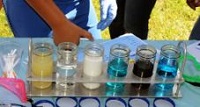
Standards are:
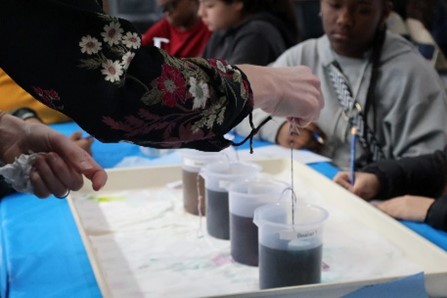 Turbidity is a measure of the clarity or cloudiness of water. This simple and fun technique to test turbidity uses a small secchi disk to measure the water transparency which can be a good indicator of water pollution. Teachers will have liquids or solutions with different clarities to test. Beakers, worksheets and secchi dishes will be provided.
Turbidity is a measure of the clarity or cloudiness of water. This simple and fun technique to test turbidity uses a small secchi disk to measure the water transparency which can be a good indicator of water pollution. Teachers will have liquids or solutions with different clarities to test. Beakers, worksheets and secchi dishes will be provided.
Standards of learning are:
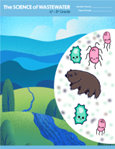 This program teaches middle school students the basics of Wastewater Treatment and management. Students will learn how to perform tests for pH, ammonia, and turbidity at each stage of the treatment processes. There is an introduction to microscopes with a focus on identifying microorganisms and why they are important to help clean the water. Students learn how to become better stewards of our environment.
This program teaches middle school students the basics of Wastewater Treatment and management. Students will learn how to perform tests for pH, ammonia, and turbidity at each stage of the treatment processes. There is an introduction to microscopes with a focus on identifying microorganisms and why they are important to help clean the water. Students learn how to become better stewards of our environment.
VA SOL standards include but are not limited to: 6.5 fg, 6.6 abef, 6.8abcd, 6.9 abcdef, LS 7ab, LS 8c LS 9bc, PS 3ad
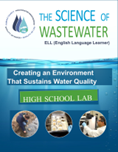

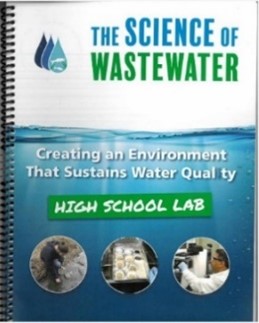
Students will learn how to become better stewards of our environment and explore environmental career options while participating in any of the three high school labs that are customized to scaffold 9-12 grade curriculums. Options include programs designed for; ELL (English Language Learner) classes, Earth Science, Biology, Environmental Science or Advanced Placement (AP) and International Baccalaureate, IB classes. The lab provides the opportunity to discuss the “Do Not Flush” materials that can cause sewer backups and blockages in the more than 3,400 miles of sanitary sewer lines located in Fairfax County. At the end of the lab, students will have gained an appreciation for how wastewater treatment plants work to protect, restore, and enhance human health and the environment.
This hands-on lab has been created with three different levels of difficulty, and as such, testing and analysis correlate with student understanding. With the help of Wastewater Management Outreach Group you will be able to select the lab that meets your needs.
VA SOL standards include but are not limited to: ES. 6acd, ES. 8cd, ES. 10 ae, ES 12e, BIO. 2ac, BIO. 4d, BIO. 8abd
Watch our videos on:
We have also collaborated with Fairfax County Public Schools to produce a Teacher Training video series:
The lab activities can be customized to your schedule or are completed over two 90-minute class periods or up to four 50-minute classes. The students learn how the municipal wastewater treatment process works. The class will create wastewater out of household ingredients that simulate waste found in real wastewater. Then, they work through the physical, biological, and chemical processes used at a treatment plant to clean the water.
For a better understanding of how the treatment processes work to clean water, the students will learn how to perform water quality testing for pH, ammonia, turbidity, and chemical oxygen demand (COD) and how to identify the microorganisms that help to reduce nitrogen levels. Identifying a wide range of microorganisms under the microscope. Advanced classes will take a more in-depth focus on creating an environment that sustains water quality through its lab activities and a more of in depth understanding of the effects of excess nutrients that 1lead to eutrophication, Nitrification/Denitrification in local bodies of water and the Chesapeake Bay.
All materials and supplies needed for the lab, including student and teacher workbooks, are supplied by Fairfax County Wastewater Management. We offer virtual assistance from a scientist and classroom assistance if needed. Individual teacher training is provided along with a step-by-step manual and training video.
The Sewer Science Program has grown since originally developed by the City of Palo Alto, California in the 1990’s. Since Fairfax County adopted the program in 2006, with the assistance of FCPS teachers, new customized versions of the lab have been created for grades 6-12, the Science of Wastewater.
To learn more or to schedule please contact DPWES WWM Outreach at DPWESOUTREACH@fairfaxcounty.gov
